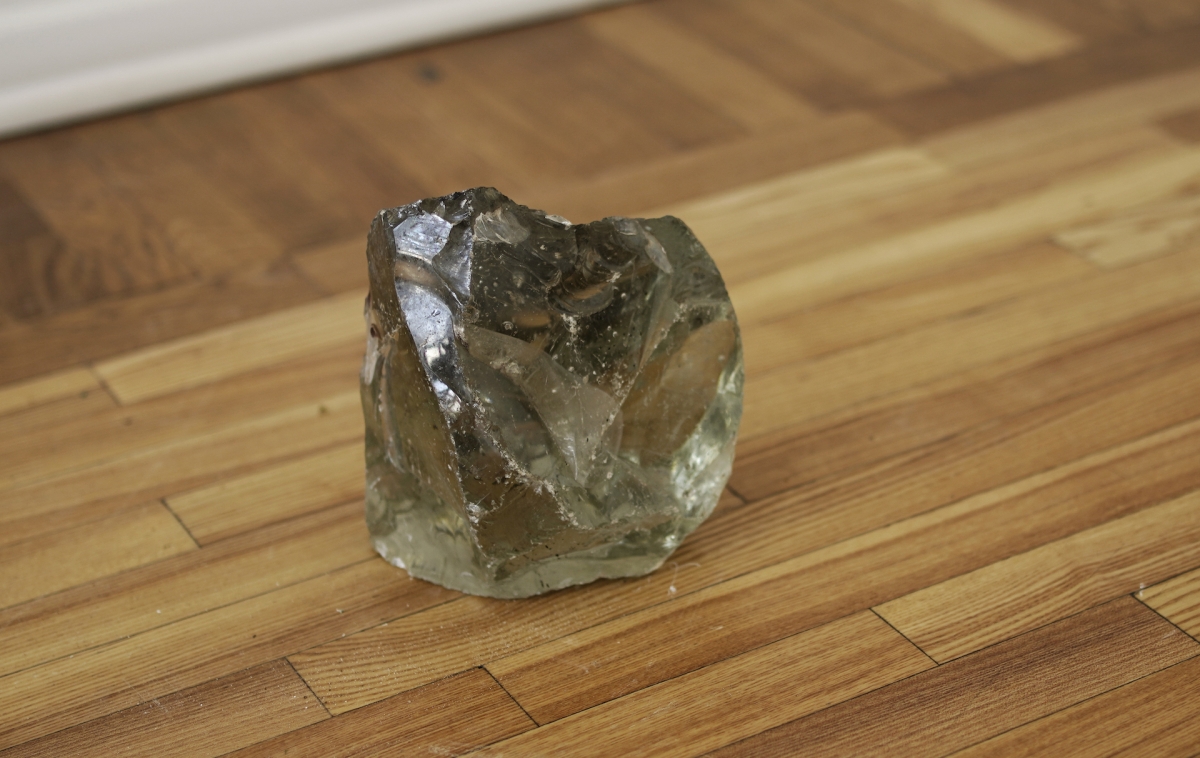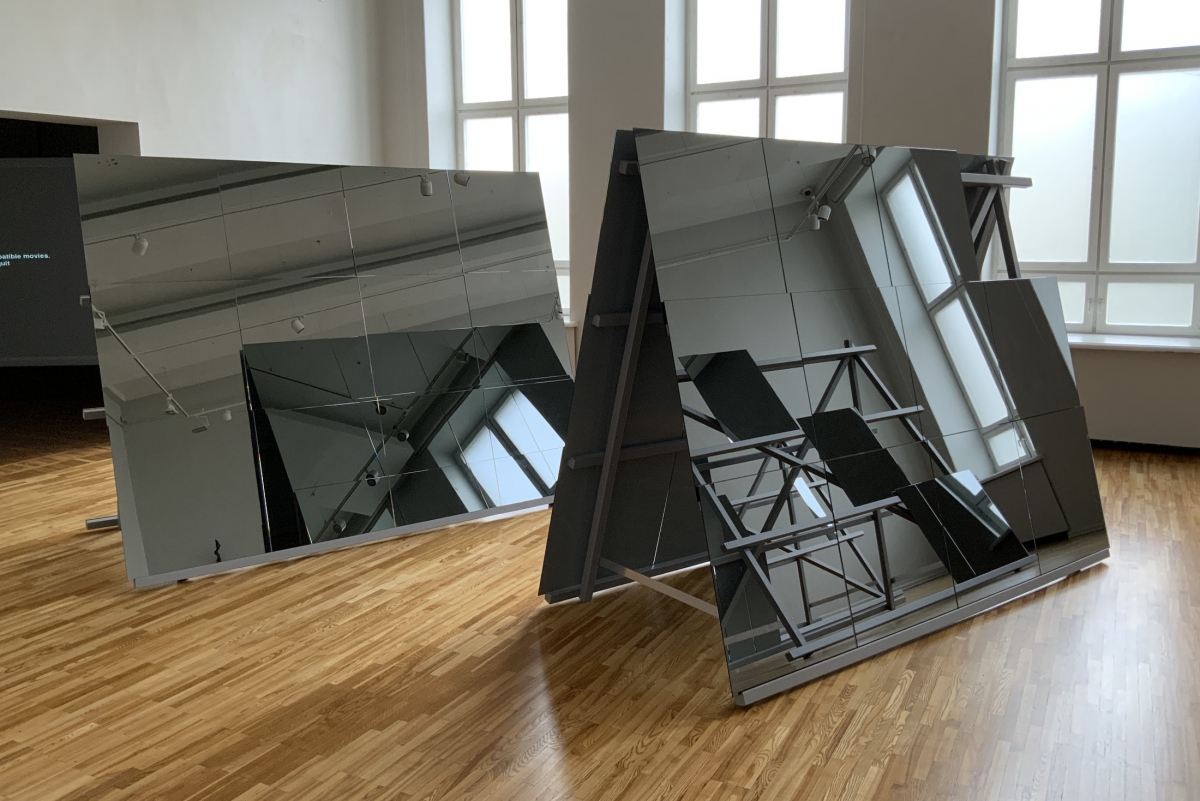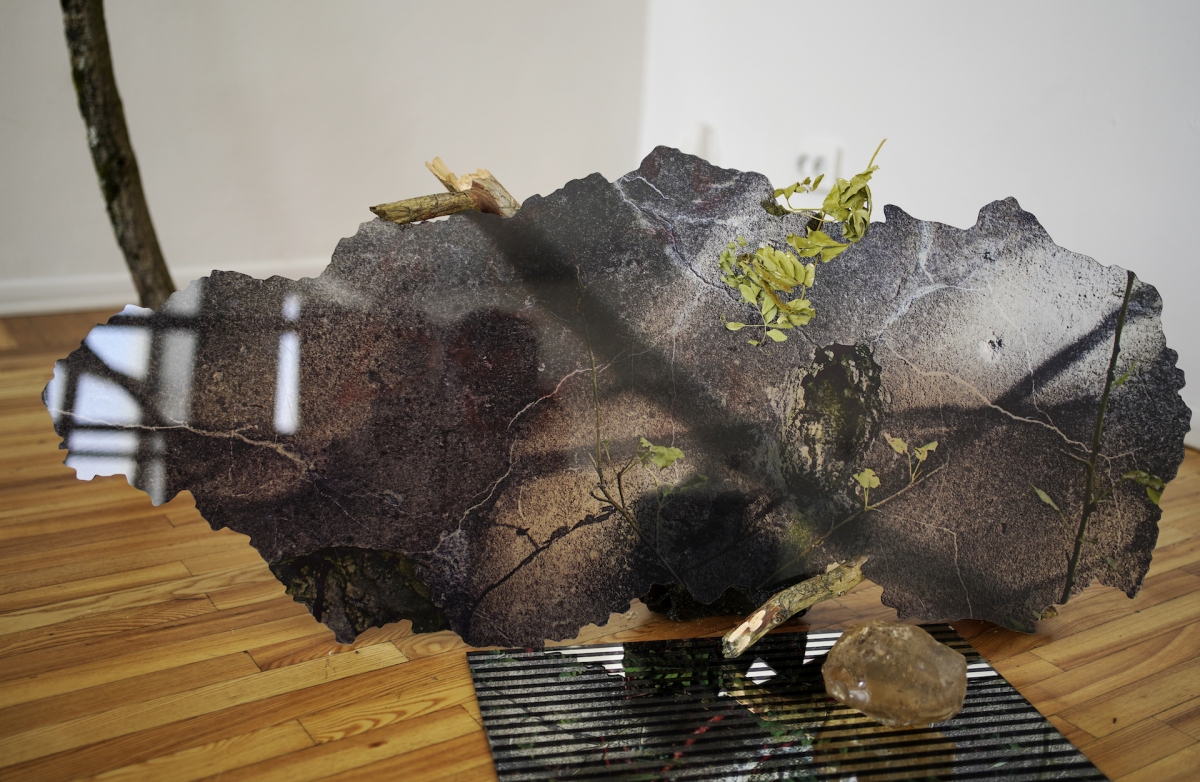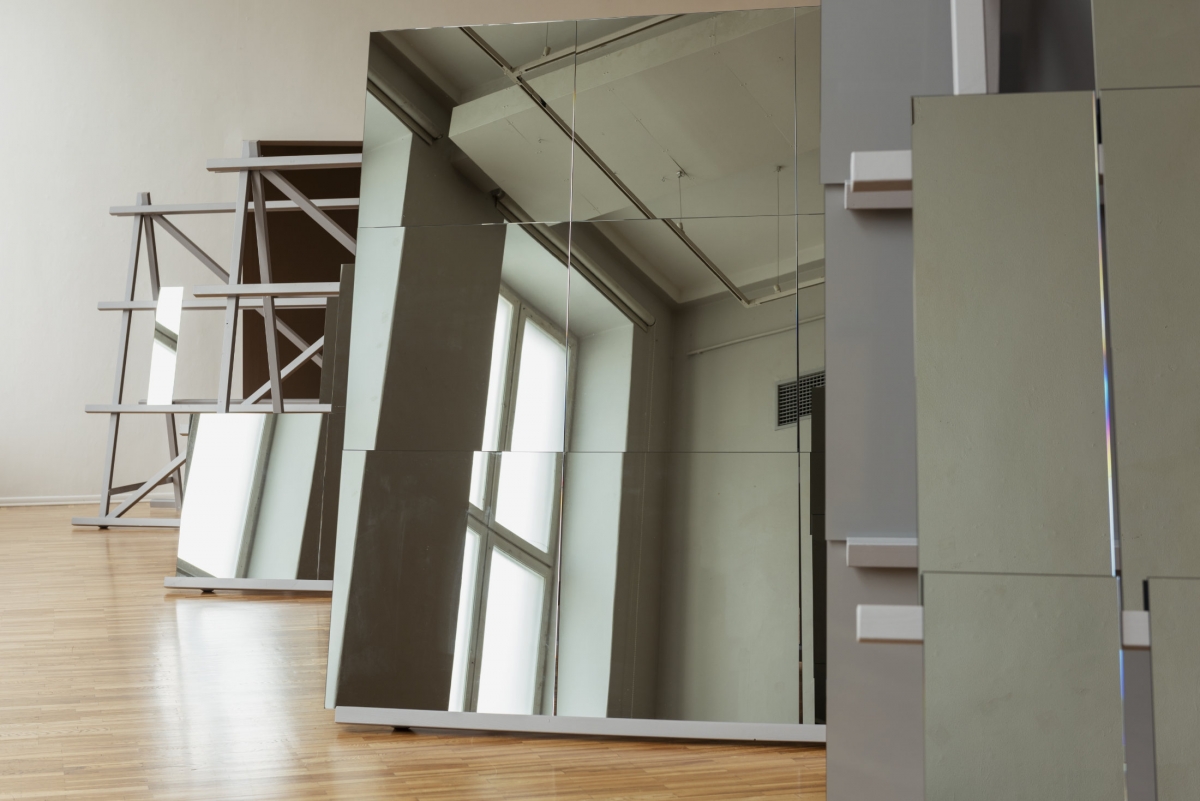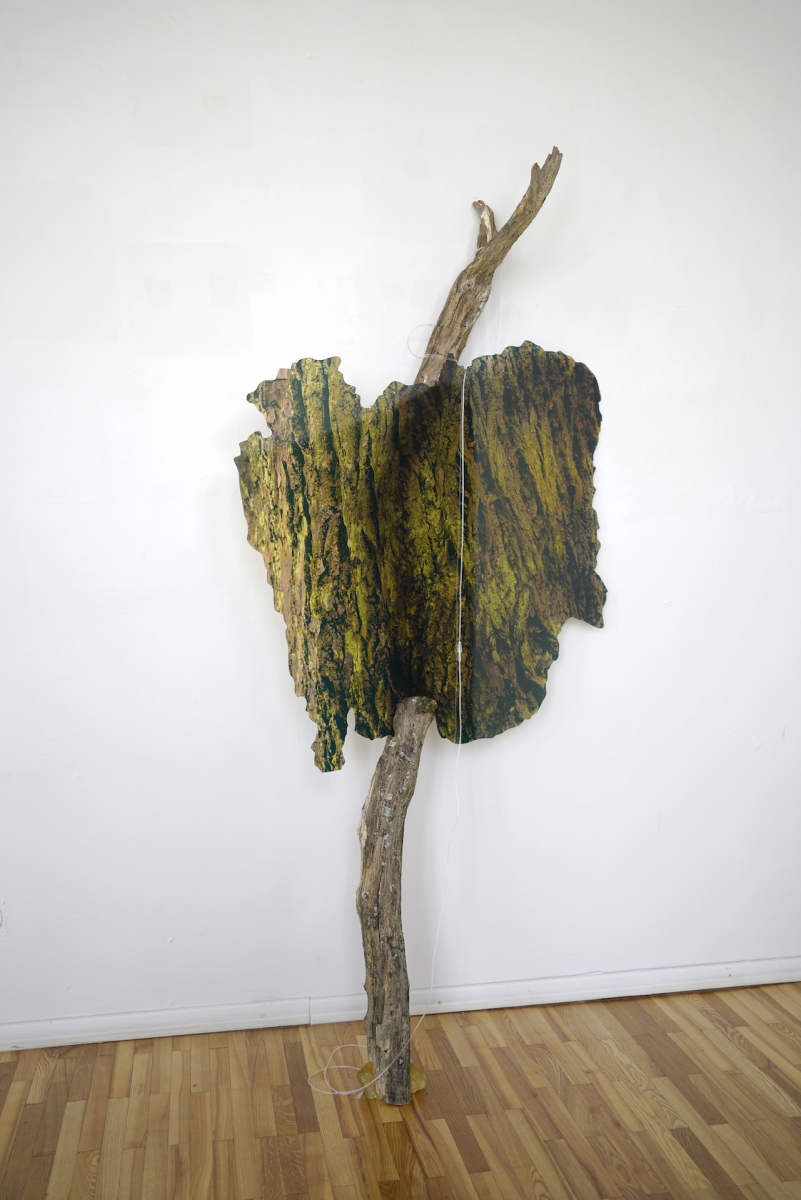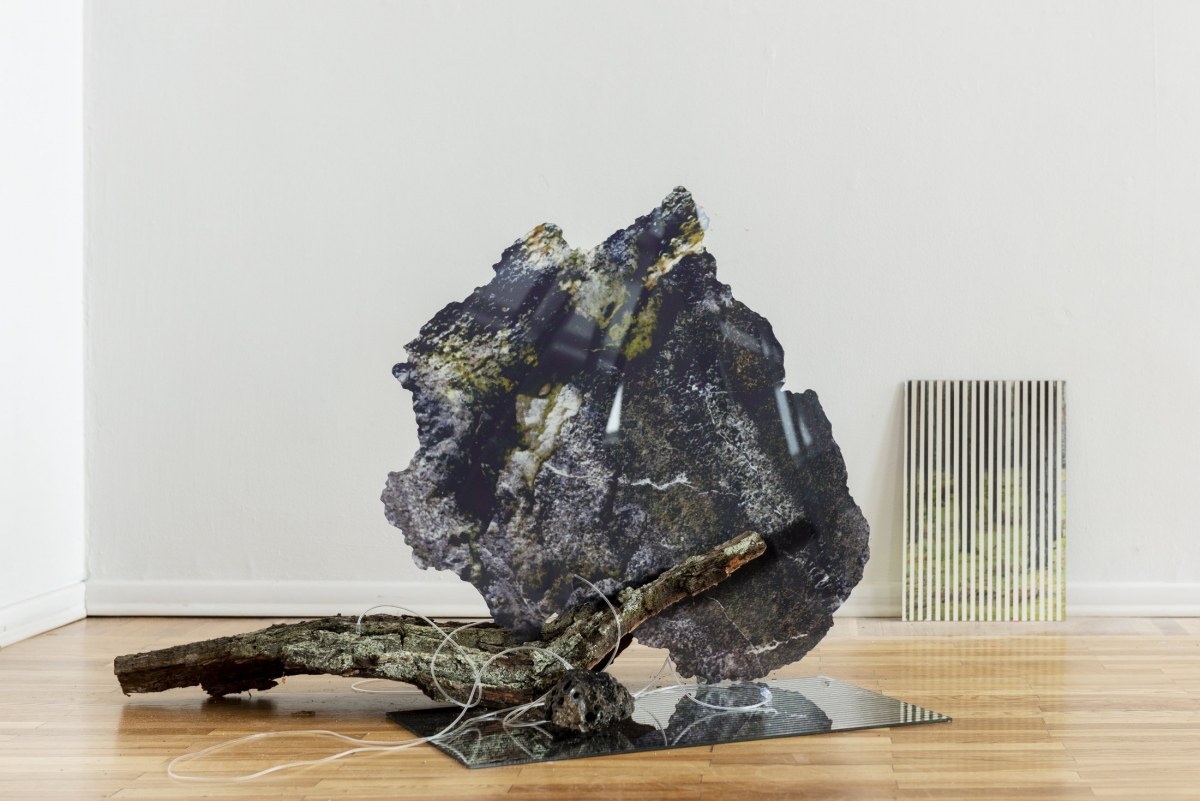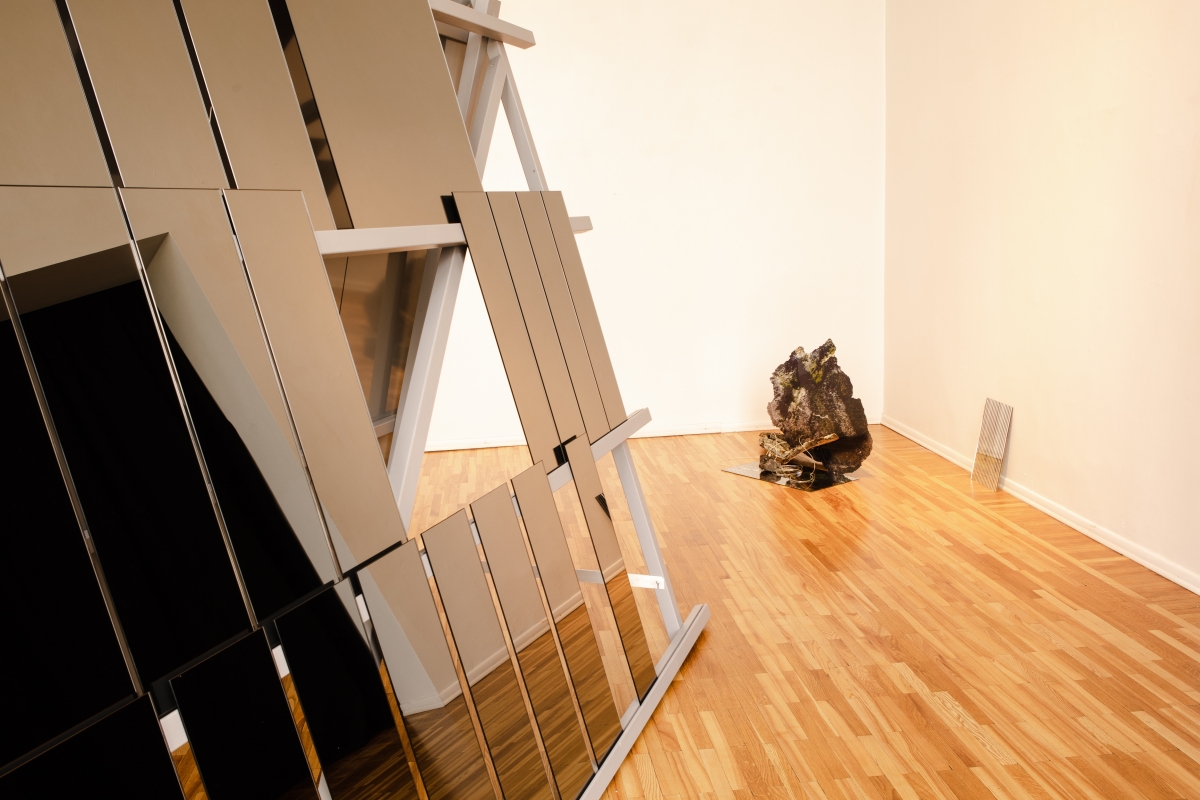Dust – the symbol of forgetting – opens hidden dimensions of the banality of everyday, moments and places considered insignificant. Dust accompanies glass artists while working, being a remnant of their work, but also hiding the transparency of the glass.
Dust refers to something being worn out and forgotten, marking the inevitability of reality and the constant changing of the world around us.
The exhibition explores forgetfulness: the forgotten spatial practices and forgotten places; actions preserved as scattered memory images, or actions, dreams, completed for yourself and packed away in a box. With their installations, the artists always reconsider the material reality and search for the meanings of the relationship between man and the environment.
Julija Pociūtė (b 1981) is a contemporary Lithuanian artist known for her mixed media installations based on interaction between video art, sculpture, design elements and photography. By combining different materials, she changes the viewer’s perception through experience and encourages them to rethink the principles of reality and illusion. In her artistic practice, the artist pays great attention to the dualistic and temporary nature of man, questioning the influence of memory on the present.
Pociūtė shows the contradiction of dust: it is a microcosm, a very small remnant of the past that records the history of vanished nature or culture. She creates enchanting capsules where she stores stories and objects. Or are they time travellers? In her installations the artist unites different materials to emphasize the relation between most important existential questions: being and nothingness; platonic research of truth and illusion. Her video was captured in the oak park in Kaunas. Pociūtė says: “The park has a way to preserve biodiversity: to keep the “dead” trees and mark them with numbers. From the inside they are alive, full of ants, mushrooms, and other lifeforms. You can notice the process of decay by watching the dust which settles down, covering the leaves and the spider nets.” She explains that in the dust we can notice the time and the memory and also to realise the process of dematerialisation. Her installation “Landscape. 102, 101” is futuristic vision: “I took wood for my newest work from the same oak park and I connected it with photos on plastic that show prints of the wood. The idea is to create a future landscape to question the way of connection with nature, the way of perception. Maybe it will be these artificial landscapes which will remind us of true nature?”
Tiina Sarapu (b. 1971) is an Estonian conceptual artist whose main medium is glass. Her works are refined in execution, carrying ambivalent meanings in their abstraction – creating unexpected connections with memory images (music consoles at a concert hall) the material culture of today’s society and our lifestyles new normalities like for example sending postal packages, using screens. Masterfully executed works are laconic, offering the viewer a lot of space for personal interpretation.
Now Sarapu reflects on the path and work of a person: where does a journey that has come from primeval nature, passed through cultivated meadows, and probably passes by solar parks takes us? So, she constructs mirrors that cover structures which are reminiscent of the historical forms of archaic wooden haystack holders: a feature which has rapidly disappeared from the Estonian traditional landscapes in recent decades. Now they are more reminiscent of the solar panels that have replaced them in the fields. “I have conflicting feelings. In a way, solar energy is a nice renewable resource that can be used to create electricity. At the same time, however, areas that could be used for agriculture and rearing cattle, are now covered in metal, composite materials and panels. We collect energy through cables and use it for controlled heating of greenhouses. Ladders for haystacks have disappeared because wood either decays or has been returned to nature through fire. What will become of the solar panels? Are they as ecological and easy to remove as haystacks?” asks Sarapu.
Her “Workstations” with cut glass resemble screens covered in traces and fingerprints which we always leave, whether we want it or not. Sarapu: “I depict the old kind of working in a specific physical location where you have your own chair and a workstation and a glass grinder. Today, however, we often work behind smooth screens where our hands quickly slip around looking for something.”
What do we forget, what do we remember, what will be destroyed forever? A new war in Europe with it ruins and destruction gives this topic a sensitive meaning.
The exhibition is also dedicated to the International Year of Glass.
‘Dust’
Tiina Sarapu and Julija Pociūtė
Curator: Karin Paulus
The exhibition is open until 2 October.
Tartu Art House
Photography: Marje Eelma, Jürgen Vainola

